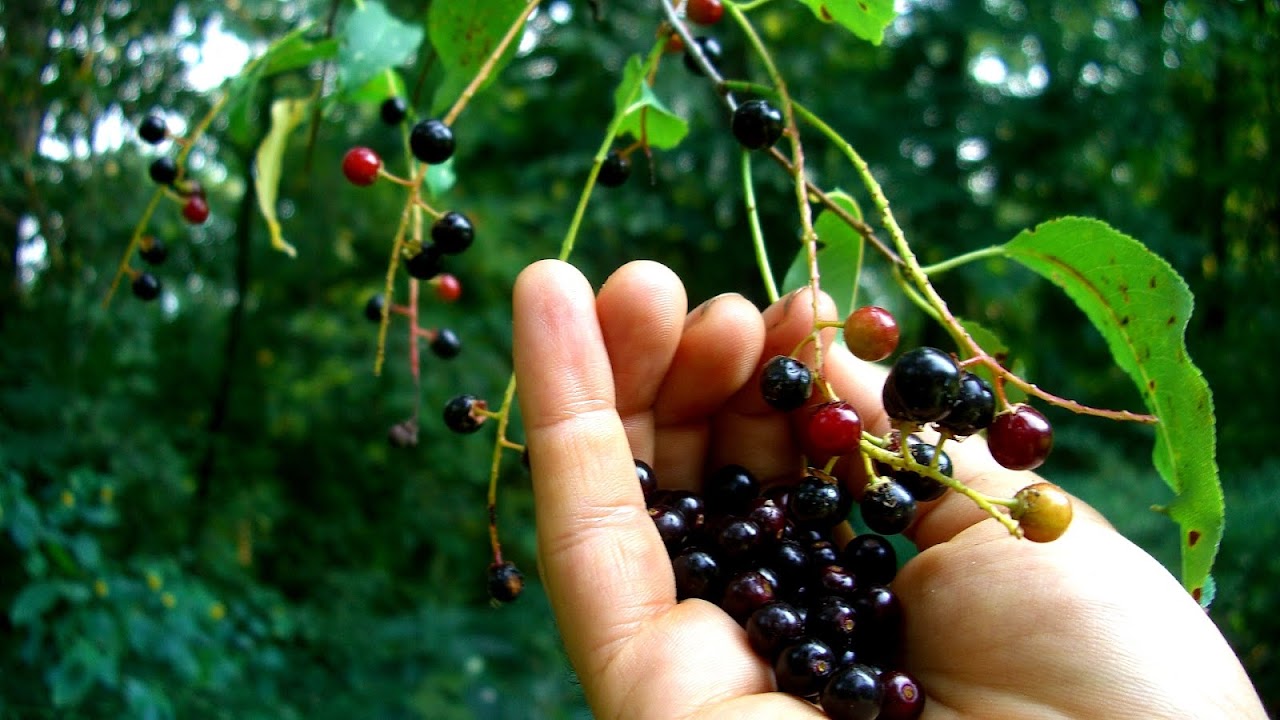
Prunus serotina, commonly called black cherry, wild black cherry, rum cherry, or mountain black cherry, is a deciduous woody plant species belonging to the genus Prunus. The species is widespread and common in North America and South America.
Black cherry is closely related to the chokecherry (Prunus virginiana); chokecherry, however, is classified as a shrub or small tree and has smaller, less glossy leaves.
- Prunus serotina var. alabamensis (C. Mohr) Little -southeastern United States
- Prunus serotina subsp. capuli (Cav. ex Spreng.) McVaugh - central + southern Mexico, Central America, South America as far south as Argentina
- Prunus serotina subsp. eximia (Small) McVaugh - Texas
- Prunus serotina subsp. hirsuta (Elliott) McVaugh - Georgia
- Prunus serotina var. rufula (Wooton & Standl.) McVaugh - southwestern United States, northern + central Mexico
- Prunus serotina subsp. serotina - Canada, United States, Mexico, Guatemala
- Prunus serotina var. serotina - Canada, United States, Mexico, Guatemala
- Prunus serotina subsp. virens (Wooton & Standl.) McVaugh

Maps, Directions, and Place Reviews
Description
Black cherry is a medium-sized, fast-growing forest tree growing to a height of 50-80 feet. Leaves are 2" to 5" in length, ovate-lanceolate in shape, with finely toothed margins. Fall leaf color is yellow to red. Flowers are small, white and 5-petalled, in racemes 4" to 6" long which contain several dozen flowers. The flowers give rise to edible reddish-black "berries" (drupes).
A mature black cherry tree can easily be identified in a forest by its very broken, dark grey to black bark, which has the appearance of very thick, burnt cornflakes. However, for about the first decade or so of its life, the bark is thin, smooth, and banded, resembling that of a birch. It can also quickly be identified by its long, shiny leaves resembling those of a sourwood, and by an almond-like odor released when a young twig is scratched and held close to the nose.
Black Cherry Prunus Serotina Video
Ecology and cultivation
Prunus serotina is a pioneer species. In the Midwest, it is seen growing mostly in old fields with other sunlight-loving species, such as black walnut, black locust, and hackberry. Gleason and Cronquist (1991) describe P. serotina as "[f]ormerly a forest tree, now abundant as a weed-tree of roadsides, waste land, and forest-margins". It is a moderately long-lived tree, with ages of up to 258 years known, though it is prone to storm damage, with branches breaking easily; any decay resulting, however, only progresses slowly. Seed production begins around 10 years of age, but does not become heavy until 30 years and continues up to 100 years or more. Germination rates are high, and the seeds are widely dispersed by birds who eat the fruit and then excrete them. Some seeds however may remain in the soil bank and not germinate for as long as three years. All Prunus species have hard seeds that benefit from scarification to germinate (which in nature is produced by passing through an animal's digestive tract).
Prunus serotina was widely introduced into Western and Central Europe as an ornamental tree in the mid 20th century, where it has become locally naturalized. It has acted as an invasive species there, negatively affecting forest community biodiversity and regeneration.
Prunus serotina subsp. capuli was cultivated in Central and South America well before European contact.

Biochemistry
Like apricots and apples, the seeds of black cherries contain compounds that can be converted into cyanide, such as amygdalin. These compounds release hydrogen cyanide when the seed is ground or minced, which releases enzymes that break down the compounds. These enzymes include amygdalin beta-glucosidase, prunasin beta-glucosidase and mandelonitrile lyase. In contrast, although the flesh of cherries also contains these compounds, it does not contain the enzymes needed to produce cyanide, so the flesh is safe to eat.
The foliage, particularly when wilted, contains cyanogenic glycosides, which convert to hydrogen cyanide if eaten by animals. Farmers are recommended to remove any trees that fall in a field containing livestock, because the wilted leaves could poison the animals. Removal is not always practical, though, because they often grow in very large numbers on farms, taking advantage of the light brought about by mowing and grazing. Entire fencerows can be lined with this poisonous tree, making it difficult to monitor all the branches falling into the grazing area. Black cherry is a leading cause of livestock illness, and grazing animals access to it should be limited.

Pest and Diseases
P. serotina is a host of caterpillars of various Lepidoptera (see List of Lepidoptera which feed on Prunus). The eastern tent caterpillar defoliates entire groves some springs.

Uses
The fruit of Prunus serotina is suitable for making jam and cherry pies, and has some use in flavoring liqueurs; they are also a popular flavoring for sodas and ice creams. The black cherry is commonly used instead of sweet cherries (Prunus avium) to achieve a sharper taste. It is also used in cakes which include dark chocolate, such as a Black Forest gateau and as garnishes for cocktails.
The wood of Prunus serotina is also used for cooking and smoking foods, where it imparts a unique flavor.
Prunus serotina timber is valuable; perhaps the premier cabinetry timber of the U.S., traded as "cherry". High quality cherry timber is known for its strong orange hues and high price. Low-quality wood, as well as the sap wood, can be more tan. Its density when dried is around 580 kg/m3 (36 lb/cu ft).
Prunus serotina trees are sometimes planted ornamentally.
Source of the article : Wikipedia


EmoticonEmoticon